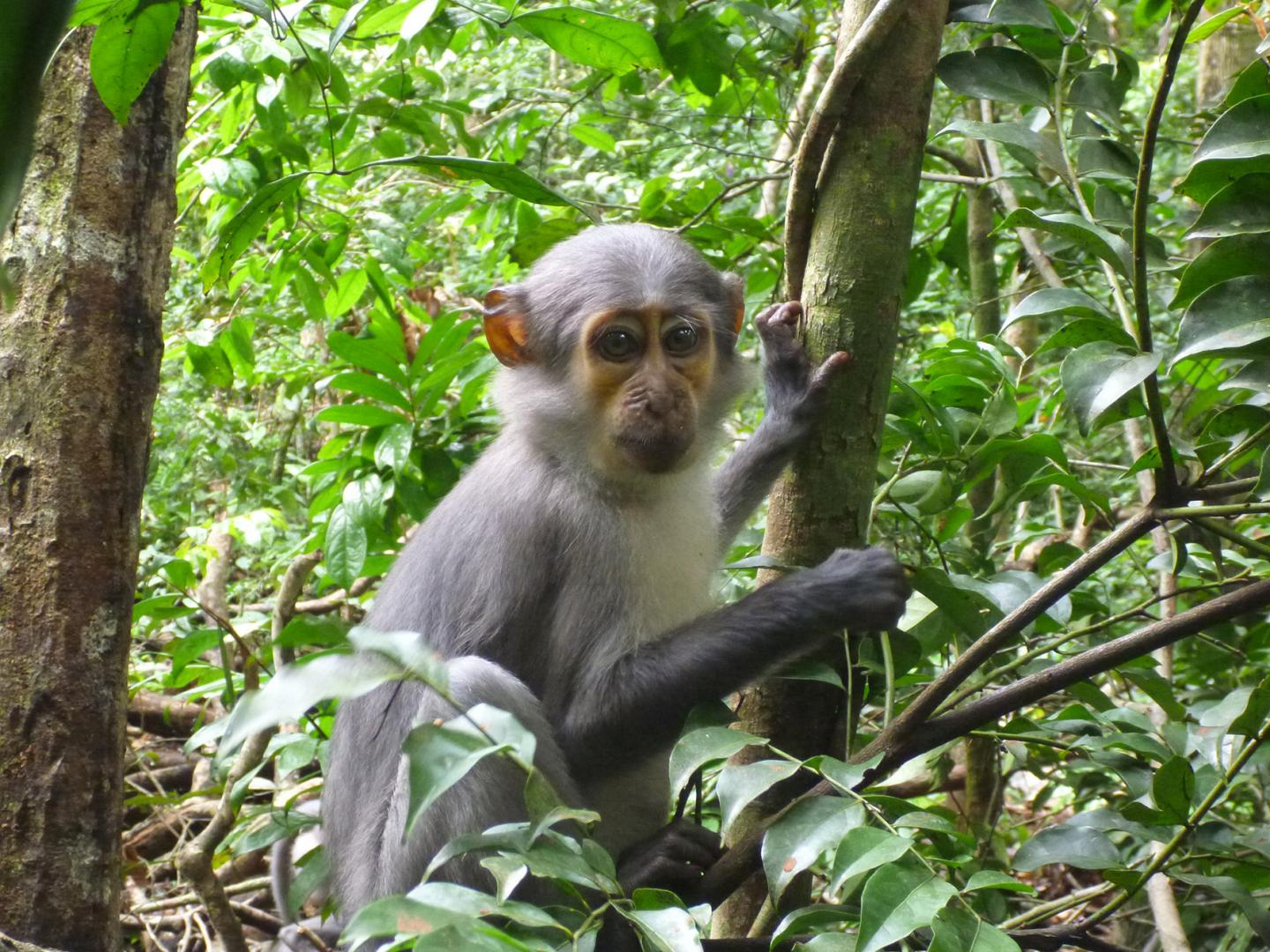Flies carrying deadly pathogens form long-term associations with monkeys and apes following them through the rainforest

Credit: Jan Gogarten, Taï Chimpanzee Project
The researchers first looked at fly densities inside and outside groups of wild sooty mangabeys and chimpanzees in Tai National Park, Ivory Coast, finding many more flies in primate social groups than outside them. First author Jan Gogarten then carried out a quirky experiment to understand how this high density of flies was maintained, marking over 1,700 flies with nail polish in a group of mangabeys. To their surprise, the researchers recaptured these colorful flies in the mangabey group up to two weeks later and nearly a kilometer and a half from where they were marked. “These surprising results suggest there is a high density fly cloud following monkeys as they move kilometers each day through the forest”, says Gogarten.
Given that monkeys and apes have flies buzzing around them in high density swarms, the team set out to test whether flies pose a disease risk like they do for humans. Indeed, nearly seven percent of flies in the mangabey group contained high concentrations of anthrax (Bacillus cereus biovar anthracis). It was possible to culture anthrax from these flies, confirming the viability of this pathogen. Previous research by the team has shown that anthrax is responsible for nearly forty percent of all animal deaths in Taï National Park, suggesting that these fly associations may pose a major risk to primates. Flies also contained the DNA of the bacterium Treponema pallidum pertenue, which causes yaws disease in humans and infects mangabeys in this ecosystem causing horrific lesions. “This study is the first to show that flies actively track primates in the forest and in doing so expose them to dangerous bacterial pathogens”, says Wittig. “These experiments suggest that fly associations represent an understudied cost of sociality and that flies are a nuisance that not only affects humans at their summer picnics, but exist more broadly in monkey and great ape populations”, says Leendertz.
There is a silver-lining to these findings – while a pathogen carrying fly swarm clearly represents bad news for these primates, they are a useful tool for monitoring the health of these populations, providing much needed data about the pathogens circulating in wildlife without necessitating the darting of wild animals, which always poses a risk to both researchers and wildlife.
###
Media Contact
Sandra Jacob
[email protected]
Related Journal Article
http://dx.




